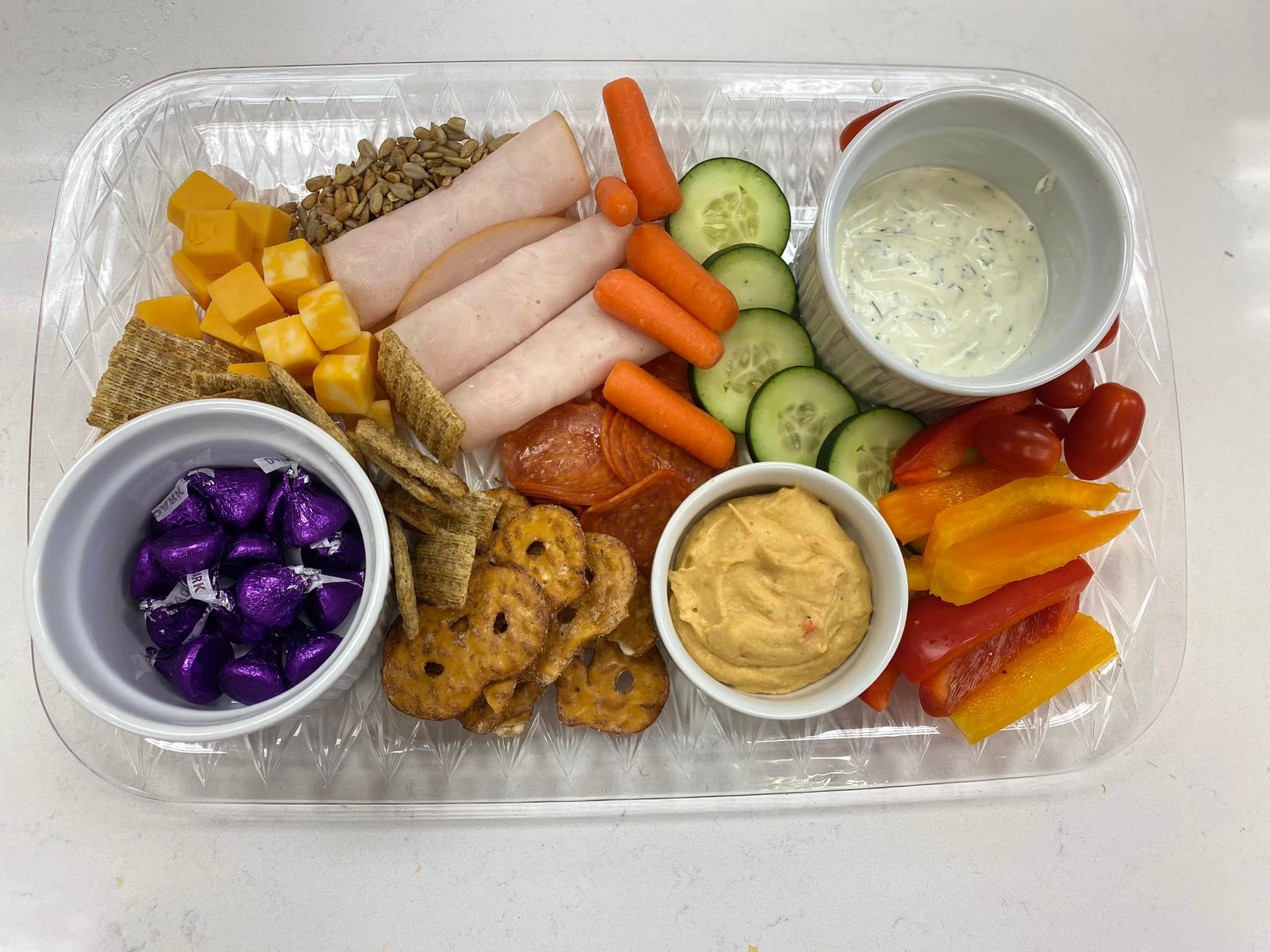Looking Differently at Charcuterie
go.ncsu.edu/readext?872400
en Español / em Português
El inglés es el idioma de control de esta página. En la medida en que haya algún conflicto entre la traducción al inglés y la traducción, el inglés prevalece.
Al hacer clic en el enlace de traducción se activa un servicio de traducción gratuito para convertir la página al español. Al igual que con cualquier traducción por Internet, la conversión no es sensible al contexto y puede que no traduzca el texto en su significado original. NC State Extension no garantiza la exactitud del texto traducido. Por favor, tenga en cuenta que algunas aplicaciones y/o servicios pueden no funcionar como se espera cuando se traducen.
Português
Inglês é o idioma de controle desta página. Na medida que haja algum conflito entre o texto original em Inglês e a tradução, o Inglês prevalece.
Ao clicar no link de tradução, um serviço gratuito de tradução será ativado para converter a página para o Português. Como em qualquer tradução pela internet, a conversão não é sensivel ao contexto e pode não ocorrer a tradução para o significado orginal. O serviço de Extensão da Carolina do Norte (NC State Extension) não garante a exatidão do texto traduzido. Por favor, observe que algumas funções ou serviços podem não funcionar como esperado após a tradução.
English
English is the controlling language of this page. To the extent there is any conflict between the English text and the translation, English controls.
Clicking on the translation link activates a free translation service to convert the page to Spanish. As with any Internet translation, the conversion is not context-sensitive and may not translate the text to its original meaning. NC State Extension does not guarantee the accuracy of the translated text. Please note that some applications and/or services may not function as expected when translated.
Collapse ▲Serving a charcuterie board is the trendy way to entertain. These carefully arranged displays of food are designed for nibbling and snacking and ease entertainment because they don’t usually require plates or sitting down. This new approach takes the old-fashioned cheese board and vegetable trays to a higher level.
When I first heard these called charcuterie boards I was confused. Traditionally the word charcuterie refers to cured meats such as sausages, dried meats, and salami-type foods. Some restaurants serve charcuterie boards that feature these cured meats with bits of cheese and fruits as appetizers.
Instead of charcuterie boards I’ve also heard people calling these elaborate displays of food “graze boards”. This name describes what guests do as they eat them….graze.
There’s nothing traditional about graze boards. While some do contain traditional charcuterie meats, they can showcase healthier options. Vegetables, fresh and dried fruits, and cheeses along with dips, hummus, and honey are frequently found on graze boards.
These boards or displays can be small for just one or two people or an elaborate display for hundreds at a wedding or large event. They typically showcase foods that pair well together and complement each other.
Your imagination is the only limit to what can be added to a graze board. Chef John LaTour from Healthy Families Healthy Futures recently showed the Family and Consumer Science team at our Extension office how to make a kid-friendly charcuterie board. Featured on this board were sunflower seeds, whole wheat crackers, reduced-sodium turkey, cheese cubes, homemade ranch dip, red pepper hummus, dark chocolate, turkey pepperoni, bell peppers, carrots, grape tomatoes and cucumbers.
If you’re wanting to buy a pre-made or make your own graze or charcuterie board, here are a few food safety tips to think about:
- Avoid purchasing ready-made graze boards from unsafe sources, such as unknown sellers online.
- When planning your board, consider how long the food will be at room temperature. While some foods are safe to stay at room temperature others will need to be thrown out after four hours.
- Crackers and breads, dried fruit and nuts, honey, shelf-stable cured meat and hard or semi-hard cheeses can be left out.
- While most fruits and vegetable can be left at room temperature, there are some exceptions. Melons, tomatoes, and leafy greens that have been cut should be left out for no more than four hours.
- Do not leave soft cheese or refrigerated meats at room temperature for more than four hours. Consider plating just small amounts and adding more during the event.
- Dips, dressings, and foods like hummus can be placed in smaller bowls and frequently replaced during the event. Don’t just refill the containers as they become empty, use clean bowls and fresh condiments.
- Since making an appealing display is important on these boards, you’ll probably be using your fingers to place items “just so”. Remember to wash your hands before beginning or consider using gloves as you assemble.
- While it would be tempting to just have everyone use their fingers (as most of the items on these boards are finger food) ask yourself…do you really want all those fingers touching and reaching for food items as they graze? You may want to provide some type of utensil such as tongs, little forks or toothpicks to encourage folks not to use their fingers.
- Consider your guests, too. Are there folks with food allergies? It may be difficult to avoid cross contact between foods. This is when an allergy food comes in contact with non-allergy food. Obviously if you know someone has an allergy, you can avoid adding that food to your board. You could consider offering that food in a separate bowl or tray so it doesn’t touch all the other foods.
Get creative. Remember, people eat with their eyes. Happy grazing.
Syracuse is a Family and Consumer Science team member and can be reached at N.C. Cooperative Extension, Brunswick County Center 910-253-2610 or by email at Cheryle_Syracuse@ncsu.edu




